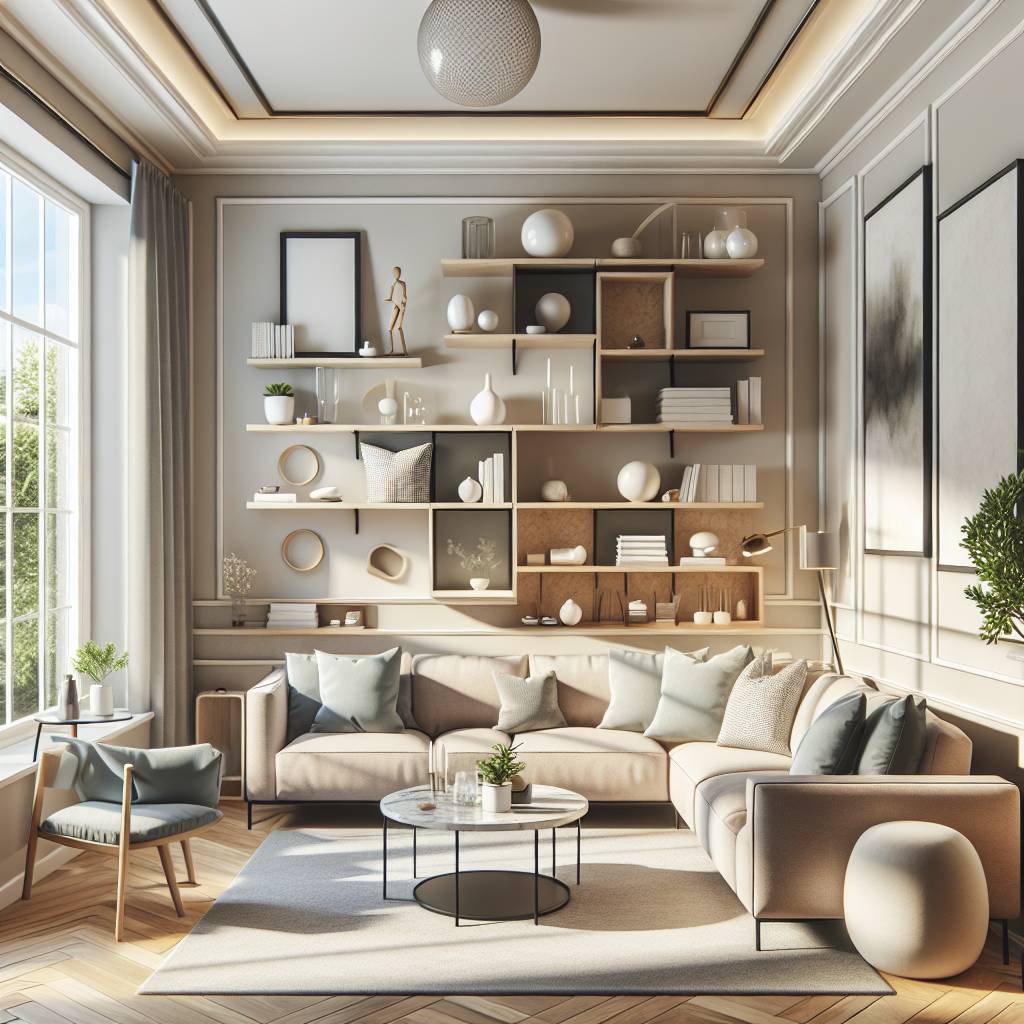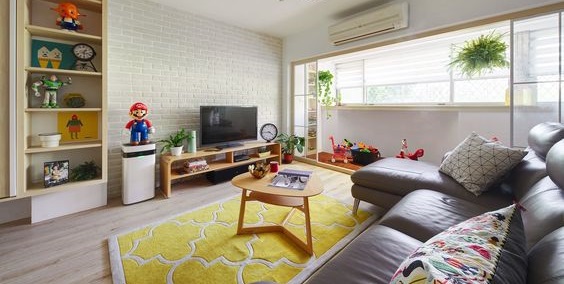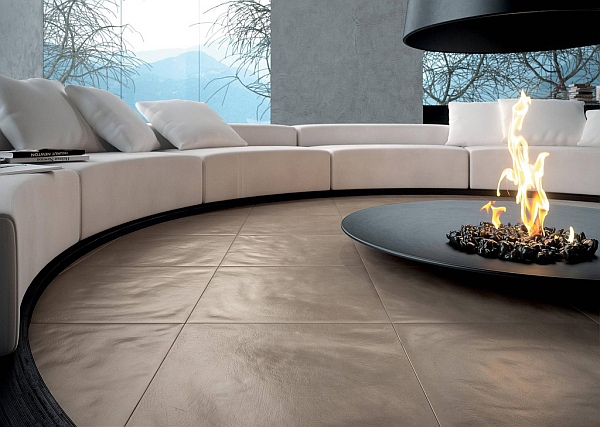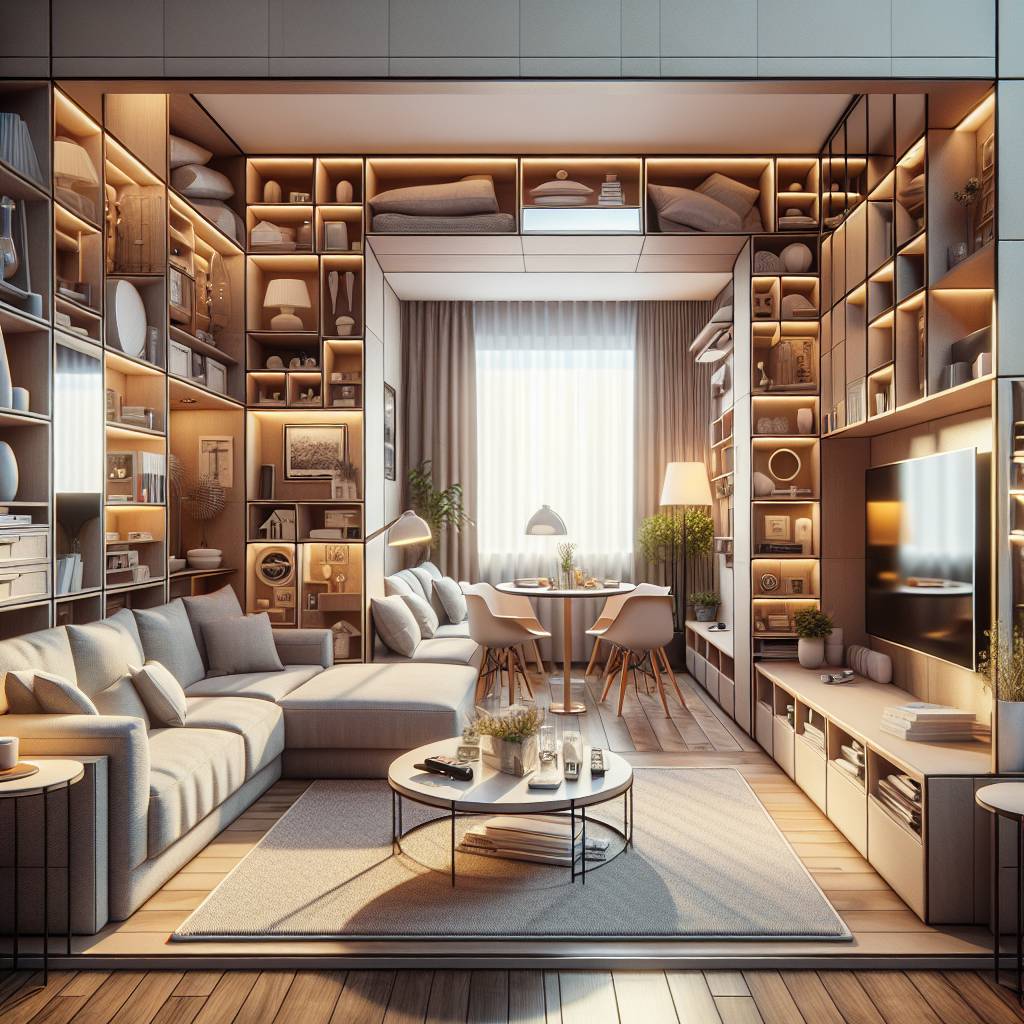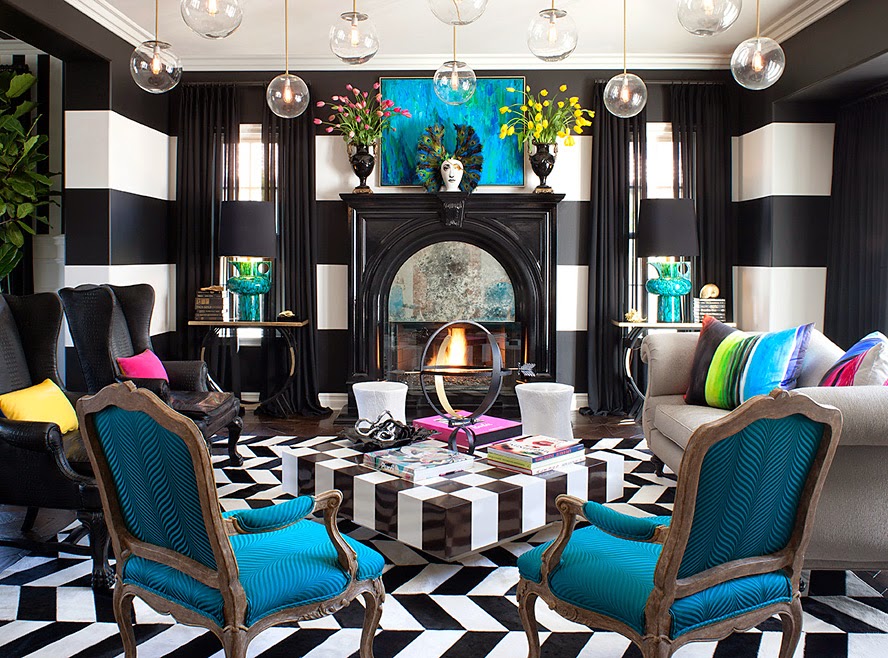Crafting the perfect small living room layout is like solving a puzzle where every piece must fit just right. In tiny living rooms, each square inch counts, and without strategic planning, your cozy space can quickly feel cramped. Yet, when done correctly, even the smallest of living areas transform into inviting havens that marry function with style seamlessly. Navigating through common design challenges requires clever small apartment living room ideas to maximize both comfort and visual appeal. By prioritizing a thoughtful arrangement of furniture and decor, you set the stage for a living room that feels spacious despite its actual footprint.
Understanding the Basics of Small Living Room Design
Key Principles
The design of a small living room hinges on certain key principles. It’s about making choices that create the illusion of space while maintaining functionality. First, consider clutter control. A minimalistic approach keeps a room feeling open and airy.
Use furniture with clean lines and keep accessories to a minimum. This reduces visual noise, making your space feel larger than it is.
Next, focus on lighting. Proper lighting can transform a cramped room into one that feels cozy yet spacious. Layer different light sources across the room for depth and warmth without taking up too much physical space.
Scale and Proportion
In small living rooms, scale and proportion are crucial in achieving an optimal layout.
Furniture that is too large will overwhelm the space, while pieces that are too small can make it seem scattered.
To get this right:
- Choose sofas with slim profiles.
- Opt for armchairs instead of bulky recliners.
- Consider floating shelves which provide storage without sacrificing floor area.
This careful selection ensures each piece fits comfortably within the available square footage.
Balance and Harmony
Maintaining balance and harmony is vital in compact spaces.
Every item should have purpose or bring joy; there’s no room for excess.
Arrange furniture symmetrically when possible to instill orderliness, or opt for an asymmetrical layout to add interest without chaos.
Include various textures through throw pillows or rugs to enrich your living environment without cluttering surfaces with decor items.
Effective Furniture Selection for Small Spaces
Scale Matters
Selecting furniture pieces that are proportional to the room’s size is essential. In a small living room, oversized couches or tables can overwhelm the space. Instead, opt for slimmer designs and smaller furniture that leave enough room to move around comfortably.
Choosing items scaled down in size maintains an open feel. For instance, a loveseat might suit your space better than a full sofa. Similarly, consider nesting tables instead of a large coffee table; they provide surface area when needed without taking up permanent floor space.
Multifunctional Pieces
Multifunctional furniture is key in maximizing limited square footage. These pieces serve more than one purpose, saving precious space. Look for beds with storage drawers underneath or ottomans that offer seating and can be used as coffee tables.
Sofa beds transform from daytime seating to nighttime sleeping arrangements effortlessly—ideal for guest accommodations without dedicating an entire room. Also popular are drop-leaf tables which expand for dining but fold away neatly against the wall when not in use.
Shape and Flow
The shape and size of your furniture greatly influence how smoothly you can move through the living room. Round or oval-shaped items tend to allow better flow because they lack sharp corners.
Opting for floating shelves instead of bulky bookcases opens up floor space while still providing storage options. When selecting chairs, armless styles often occupy less visual weight and physical space compared to their armed counterparts.
Strategic Furniture Placement for Functionality and Style
Traffic Flow
When arranging furniture in a small living room, traffic flow is key. You want to move easily without bumping into things. Place couches and chairs so paths are clear. This makes the space feel bigger.
A smart layout means leaving some areas open. For example, don’t block windows or doorways with big pieces. Use rugs to guide people through the space.
Corner Utilization
Corners can be gold mines in tight spaces. A corner shelf or desk uses less floor area than if it’s in the middle of the room. It’s about being clever with your furnishings.
Think vertical too! Tall, slim bookcases can hold lots without taking much space on the ground. They draw eyes up, making rooms seem taller.
Visual Interest
Creating a stylish look is also about arrangement, not just what you have. Arrange furniture at angles for dynamism or group them for cozy areas within your living room.
Mix different shapes and sizes of furnishings to add interest but keep balance in mind too; don’t let one side get too heavy with large items while another looks bare.
Furniture should serve its function but also contribute to an overall pleasing pattern in your living room layout plan.
Utilizing Storage Smartly in Compact Living Areas
Dual-Purpose Furniture
Furniture with built-in storage maximizes living space. Think of ottomans with lids or couches that lift to reveal compartments. These pieces serve their primary function while hiding clutter. A bed with drawers underneath can store clothes or linens, reducing the need for a dresser.
Sofa beds are another smart option. They provide seating by day and transform into a sleeping area at night. This is ideal for an apartment where every square inch counts.
Vertical Solutions
Using vertical space is key in small living rooms. Shelves reach high, not wide, using walls instead of floor space. Install shelves above doorways or windows for books or decor items.
Tall, narrow shelving units take advantage of height without eating up precious floor area. Corner shelves utilize often-overlooked spaces efficiently.
Hidden Compartments
Look for hidden storage to keep your living room tidy. Coffee tables with secret drawers can hide remotes and magazines when not in use. TV stands might include cabinets that tuck away electronics and cables neatly.
Consider floating furniture like wall desks which offer workspaces that fold away when you’re done using them.
Creating a Cozy Nook for Added Comfort
Unused Corners
Unused corners in your living room can be goldmines for added comfort. They are often overlooked spaces. But with some creativity, they become cozy nooks. These areas offer a private retreat within the home.
A corner by the window is perfect for a reading spot. Add a comfy armchair and a small bookshelf to transform it into an inviting space. The natural light from the window creates an ideal reading environment during daytime hours.
Compact Seating
Choosing seating is crucial when creating nooks in small spaces. Opt for compact chairs that fit snugly into corners without overcrowding the area.
Look for seats with clean lines that match your decor style. A loveseat or an accent chair works well too, especially if placed back-to-back with another piece of furniture to define the nook area without using extra room dividers or walls.
Soft Lighting
Lighting plays a big role in making any space feel warmer and more welcoming. In cozy nooks, soft lighting sets the right mood for relaxation.
Install sconces on adjacent walls to provide gentle illumination without taking up floor space like lamps might do. Or consider string lights draped along shelves or around windows to add sparkle and charm.
Textile Touches
Textiles bring texture and warmth into any living space, making them essential extras for your new nook.
Throw blankets and plush cushions make seating even more comfortable while adding color and pattern to your decor theme—a simple way people can personalize their little sanctuary at home.
Dual-Purpose Furniture to Maximize Space
Smart Selections
Dual-purpose furniture is a game-changer in small living rooms. It combines two or more uses into one piece, saving precious floor space. A classic example is the sofa bed. By day, it’s a comfy couch for sitting and by night, it transforms into a bed for sleeping.
When picking dual-purpose items, focus on durability and style. Look for sturdy construction and materials that can handle daily transformation without wear and tear. Choose designs that blend with your decor to create a seamless look.
Creative Integration
Incorporating these pieces creatively can redefine your living room’s functionality. Storage ottomans are not just footrests; they’re hidden compartments for blankets or books. When guests come over, they double as extra seating.
Think outside the box with wall space too. Shelves above doorways add storage without cluttering the floor area. Even TV stands with built-in cabinets make an impact by housing electronics and other knick-knacks neatly tucked away.
Enhancing Light and Visual Space Illusion
Mirror Magic
Mirrors are a designer’s trick for small spaces. They reflect light, adding depth to rooms. Place mirrors opposite windows. This doubles the natural light entering your living room. The effect is striking.
A large mirror makes the space feel bigger. It reflects both artificial and natural light during day and night, brightening up your area.
Color Choices
Light colors make spaces look larger. Use pale shades on walls to create an airy atmosphere. White or beige expands walls visually, offering a sense of more room.
Furniture should match this color scheme for consistency in illusion-making.
Innovative Seating Arrangements for Small Living Rooms
Unconventional Choices
The quest for the optimal living room layout often leads to exploring unique seating options. Floor cushions and poufs represent a smart way to maximize floor space while offering comfortable seating. They can be easily moved or stored, providing versatility in small spaces.
Floor cushions are not just practical; they add a cozy, informal vibe to your living room. Imagine having friends over for movie night and everyone lounging on large, plush cushions—it’s an intimate setup that larger furniture pieces can’t replicate. Poufs serve a dual purpose as well—they’re perfect as footrests or impromptu tables when topped with a tray.
Flexibility Is Key
Creating flexible seating arrangements is crucial in small living rooms. Furniture that serves multiple purposes is ideal for adapting to different occasions without cramping the space.
Consider convertible sofas that turn into beds or modular sectionals you can rearrange based on your needs—this flexibility makes it easier to host guests or change up the layout when you desire something new. A great way to keep things fresh is by varying your seating configurations regularly, which also helps prevent wear patterns on carpets or flooring from constant use of one area.
Comfort Meets Efficiency
When choosing seats for small spaces, balance between comfort and efficiency becomes paramount. Every piece should offer maximum usability without overwhelming the area.
Opt for slim armchairs with clean lines instead of bulky recliners if you prefer traditional seating areas. Chairs with raised legs create an illusion of more floor space—a trick that enhances both aesthetics and functionality in compact rooms.
For those who enjoy creative ideas, consider wall-mounted benches or fold-down chairs that disappear when not in use; this way, you maintain walking pathways and visual openness essential in tight quarters.
Designing a Focal Point to Anchor the Room
Choosing Appropriate Focal Point
When designing the optimal living room layout for small spaces, it’s crucial to choose an appropriate focal point. This could be a fireplace, a large window with a beautiful view, or even a piece of artwork. The chosen focal point should be the center of attention upon entering the room. By selecting the right focal point, you draw attention away from the size of the room and instead focus on its key features.
Strategic Decor Placement
Enhancing your chosen focal point with strategic decor placement can significantly impact how spacious your living room feels. Placing furniture around this focal point in a way that opens up space and creates flow is essential. For instance, if you’ve selected an accent wall as your focal point, consider placing a few well-chosen pieces of furniture against it to create balance and symmetry within the space.
Making The Room Appear Larger
A well-chosen focal point has the power to make your small living room appear larger than it actually is. When visitors enter and their eyes are immediately drawn to this central element, they’re less likely to notice any spatial constraints. By strategically arranging other elements such as lighting fixtures or creating a gallery wall around this area can further enhance this effect.
Conclusion on Maximizing Small Living Room Layouts
Crafting the perfect small living room is all about smart choices and creative thinking. You’ve got the basics down—selecting the right furniture, placing it strategically, and using lighting to your advantage. It’s like solving a puzzle where every piece must fit just right to create a picture of cozy sophistication. Remember, dual-purpose items are your best pals, turning tight spots into comfy nooks with style to spare.
Now’s the time to put these tips into action! Roll up your sleeves and transform your compact space into a welcoming retreat that feels bigger and better than ever. Share your before-and-after shots with us, or reach out for advice. Let’s make your small living room not just work, but dazzle. Ready, set, redesign!
Frequently Asked Questions
How can I make my small living room look bigger?
Choose light colors for walls, use mirrors to reflect light, and keep furniture scaled to the room. Opt for pieces that serve multiple purposes to reduce clutter.
What’s the best way to arrange furniture in a small living space?
Focus on functionality by placing your largest piece first, usually a sofa, against the longest wall. Then arrange other items around it while ensuring clear pathways.
Can large furniture work in a small living room?
Yes, but limit it to one or two pieces. A sizable couch can actually make the space feel more luxurious if there’s enough walking space around it.
Are sectionals suitable for small living rooms?
They can be if they fit proportionately within the space and offer built-in storage or convert into beds for dual-purpose functionality.
How do I create storage in my tiny living area without cramping it up?
Opt for vertical shelving units and choose furniture with hidden storage compartments like ottomans or coffee tables with drawers.
What kind of seating is best for a compact living room layout?
Consider loveseats, armless chairs, or nesting stools that are easy to move around and don’t take up too much visual weight.
Should I have a focal point in my small living room design?
Absolutely! A focal point draws the eye and adds interest; this could be an art piece, fireplace, window view or even an accent wall.
